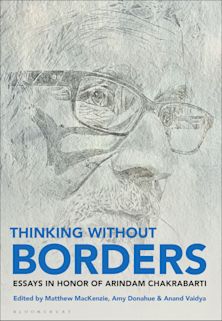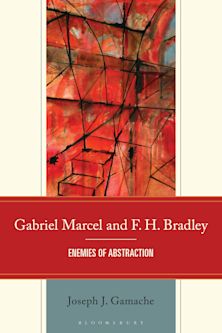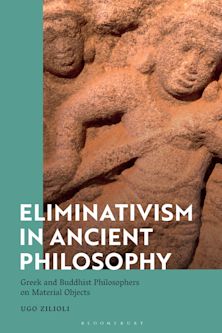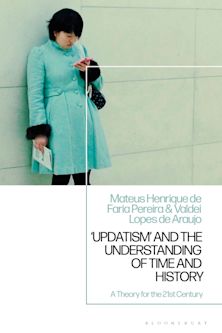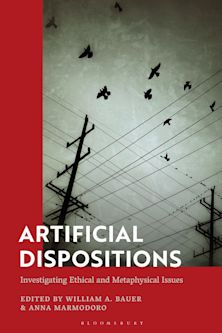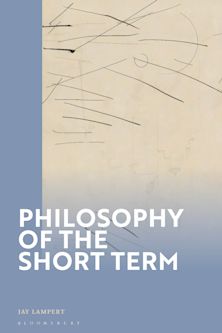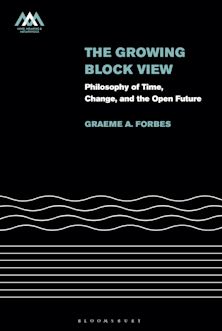- Home
- ACADEMIC
- Philosophy
- Metaphysics
- Liminality in Questions of Truth
Liminality in Questions of Truth
The Law of the Included Middle
Liminality in Questions of Truth
The Law of the Included Middle
This product is usually dispatched within 1 week
- Delivery and returns info
-
Free US delivery on orders $35 or over
You must sign in to add this item to your wishlist. Please sign in or create an account
Description
A limen links the interior of a building to what lies outside it. It is also the connection between any one of its rooms and other areas of the building. It is thus a kind of necessary included middle marking the transition from one domain to another. We are often tempted to think that the boundary between truth and falsity must always be absolute, and thus that there is no possible bridge between the two; in other words, that it is the nature of any genuine truth to be completely contradicted by its denial. In Liminality in Questions of Truth: The Law of the Included Middle, Donald A. Crosby questions this idea, calling it a Law of the Excluded Middle and contending that, in many cases, there is a Law of the Included Middle that must be carefully considered and thoughtfully applied. Absolute, either/or truths are rare, and most claimed truths, when carefully examined, are imprecise, in need of further investigation, or no longer tenable in their present form. This is especially the case when the alleged truths relate to fundamental, wide-ranging issues of conviction, purpose, and value. Failing to ask the right questions can bar the way to more satisfactory answers. This book argues that searching for liminal bridges between opposing claims is an essential part of such questioning.
Table of Contents
Chapter 1. Included Middles
Chapter 2. The Abstract and the Concrete
Chapter 3. Humans and Nature
Chapter 4. Feeling and Knowing
Chapter 5. Past and Future
Chapter 6. Self and World
Chapter 7. Preservation and Innovation
Chapter 8. Monologue and Dialogue
Product details
| Published | Sep 12 2023 |
|---|---|
| Format | Hardback |
| Edition | 1st |
| Extent | 168 |
| ISBN | 9781666934311 |
| Imprint | Lexington Books |
| Dimensions | 9 x 6 inches |
| Publisher | Bloomsbury Publishing |
About the contributors
Reviews
-
Employing a nonbinary logic of the “included middle,” Donald Crosby continues his decades-long effort to illuminate the nature of nature. Nested in the relationality of nature where every particle and wave is sacred, the “middle” reveals deep relations between the terms of seven ostensible binaries: abstract/concrete, human/nature, feeling/knowing, past/future, self/world, preservation/innovation, and monologue/dialogue. Crosby acknowledges the irreducibility of binary logic (the excluded middle) in some instances, but argues that the both/and logic of the included middle often provides a better account of the nature of things. As an exemplar of relationality and interconnections, the middle emerges as among the most profound features of all that is.
William Hart, Macalester College
-
In a series of books, Don Crosby has been developing a clear and compelling philosophy adequate to the issues, insights, and complexities of our time. Liminality in Questions of Truth gathers together, in crystalline clarity, his reconceived understanding of such world-revealing concepts as nature, time, truth, relationship, tradition, freedom, sacredness, dialogue, and responsibility. Such terms are shown to contribute jointly to the liminal space within which free, open inquiry can foster among discussants a middle ground of understanding. The process of inquiry is enhanced by the epistemic virtues of listening, questioning, and musing. Crosby thus provides in this work a natural, evolutionary vision in which life’s necessary limitations are balanced against its joy-producing opportunities. The result is a comprehensive work of vast wisdom.
Walter B. Gulick, author of Recovering Truths: A Comprehensive Anthology of Michael Polanyi's Writings

ONLINE RESOURCES
Bloomsbury Collections
This book is available on Bloomsbury Collections where your library has access.

















